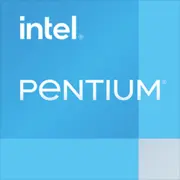Intel Pentium B970

2025年のIntel Pentium B970: 古くなったプロセッサを考慮する価値はあるのか?
アーキテクチャ、プロセス技術、および主な特性
2012年に発売されたIntel Pentium B970プロセッサは、Sandy Bridgeアーキテクチャに属し、32nmプロセス技術で製造されています。これは、ハイパースレッディングをサポートしないデュアルコアCPU(2コア/2スレッド)で、基本クロック周波数は2.3GHzです。ターボモードはなく、一時的な性能向上が求められる作業では限界があります。
内蔵グラフィックス (iGPU): Intel HD Graphics (Sandy Bridge) で、実行ユニット(EU)は6つです。この解決策は、オフィスアプリケーションの使用、HD動画の視聴、低設定での軽量ゲーム(MinecraftやCS:GOなど)の実行にしか適していません(20-30 FPS)。
消費電力とTDP: パフォーマンスとバッテリー寿命のバランス
プロセッサのTDPは35Wで、当時の低価格モバイルCPUとしては一般的です。比較のために、現代の2023年の第13世代Intel Core i3プロセッサは、パフォーマンスが大幅に向上しているのに対し、TDPは15Wです。
Pentium B970は次のエネルギー節約技術をサポートしています:
- Enhanced Intel SpeedStep — 負荷に応じた動的な周波数と電圧の変化。
- Thermal Monitoring — 過熱からの保護。
ただし、深いスリープ(Deep Sleep C-states)などの先進的機能が欠如しているため、エネルギー効率に制限があります。
実際の作業におけるパフォーマンス
Geekbench 6(2025年)のデータによると:
- シングルコアスコア: 371点。
- マルチコアスコア: 557点。
参考までに、現代の予算向けプロセッサであるIntel N100(2023年)は、シングルコアテストで約1200点を記録しており、これは3倍のスコアです。
使用シーンの例:
- オフィス作業: Word、Excel、5〜10タブのブラウザを使用。ZoomとGoogle Docsを同時に起動すると、明らかなラグが発生します。
- マルチメディア: YouTubeでの1080pの動画視聴は可能ですが、4Kはハードウェアでサポートされません。
- ゲーム: 古いゲームのみ — Half-Life 2、World of Warcraft Classicの最低設定でのプレイ。
使用シナリオ: 2025年にPentium B970が適しているのは誰か?
1. 予算機器: $400以下のノートパソコン(もしまだ販売されているなら)。
2. 中古市場: 基本的な作業のために中古デバイスを購入。
3. 教育目的: レポートを書くための安価なラップトップが必要な学生や生徒。
適していない用途:
- 動画編集、3Dモデリング。
- 現代のゲーム(Fortniteさえも起動しません)。
- ニューラルネットワークや仮想化作業。
バッテリー寿命: どれくらい持つのか?
TDPが35Wで、バッテリー容量が40Whの場合、軽負荷での使用時に3〜4時間の稼働が見込まれます。比較すると、Intel Core i3第12世代ノートパソコン(TDP 15W)は8〜10時間のバッテリー寿命を提供します。
アドバイス: バッテリー寿命が重要な場合は、エネルギー節約機能が追加されたデバイスを探してください:
- 自動画面輝度調整。
- OSの「電源節約モード」。
競合との比較
1. AMD A6-3420M(2011年): 4コア、TDP 35Wですが、シングルコア性能は低い。マルチスレッド作業には適していますが、通常のアプリケーションでは劣ります。
2. Intel Core i3-2350M(Sandy Bridge): ハイパースレッディング(4スレッド)をサポートし、マルチタスク性能を向上させます。
3. Apple M1(2020年): 基本的なM1でもPentium B970を6〜8倍のパフォーマンスで上回りますが、TDPは10Wです。
Pentium B970の利点と欠点
利点:
- 低価格のデバイス。
- 簡単な作業に対して十分な性能。
- 低発熱(コンパクトな筐体に適しています)。
欠点:
- 古いアーキテクチャ(AVXや最新の命令をサポートしていない)。
- ターボブーストがない。
- 弱いグラフィックス。
ノートパソコン選びのポイント
2025年にPentium B970を搭載したデバイスを購入する場合:
1. デバイスタイプ: 予算ノートパソコン(ウルトラブックではない)。
2. 必須コンポーネント:
- HDDではなくSSD(システムの起動を高速化します)。
- 8GBのRAM(Windows 11を運用するための最小限)。
- 解像度1920x1080のマットスクリーン。
3. 価格: 高額出費は避けてください。新しいデバイスが$350を超える場合、最新のモデル(例えばIntel Celeron N4500ベース)を検討した方が良いでしょう。
最終的なまとめ
2025年のIntel Pentium B970は、非常に限られた予算のある人にとっての選択肢です。基本的な作業には対応できますが、中古市場でもより新しいプロセッサ(例えば、Intel Core i5第8世代)に目を向けるべきです。
主な利点:
- 低価格。
- 標準ソフトウェアのサポート(オフィススイート、ブラウザなど)。
リスク:
- 迅速な古さ(Sandy Bridgeに最適化されていないアプリもあります)。
予算に余裕があるなら、2020年以降のプロセッサを搭載したノートパソコンを選ぶのが最適であり、今後3〜4年間のパフォーマンスを確保できます。
基本
CPUの仕様
メモリ仕様
GPUの仕様
その他
ベンチマーク
他のCPUとの比較
ソーシャルメディアで共有する
または当サイトへのリンクを追加
<a href="https://cputronic.com/ja/cpu/intel-pentium-b970" target="_blank">Intel Pentium B970</a>